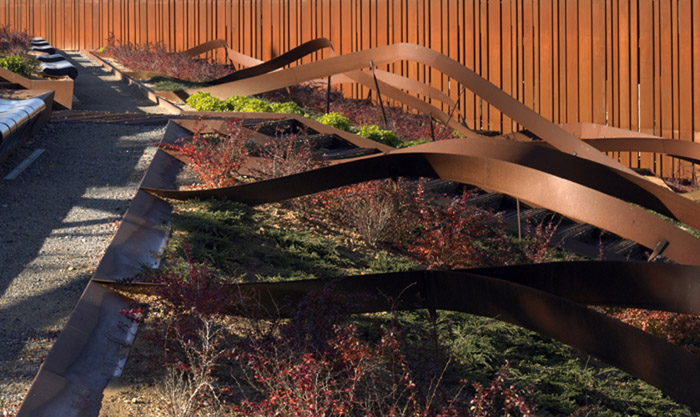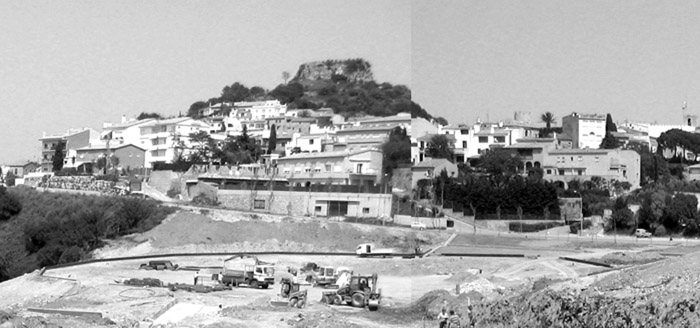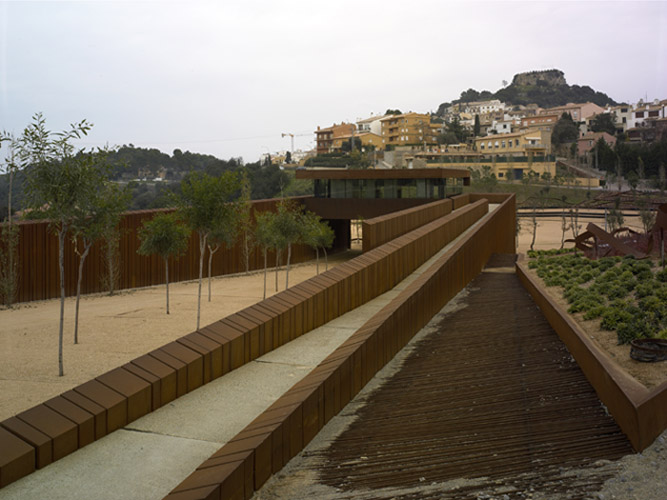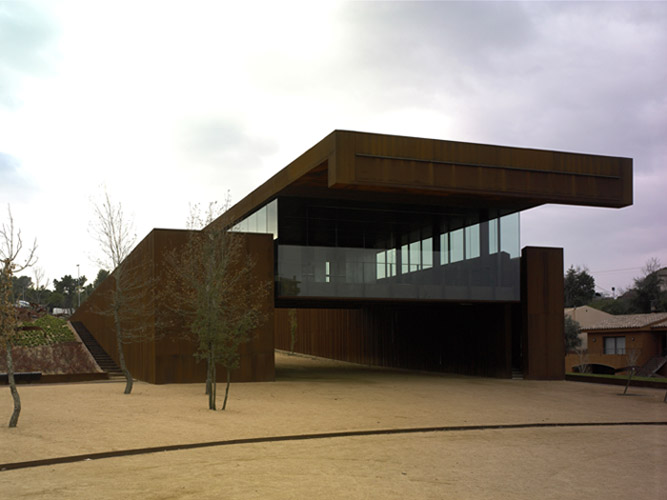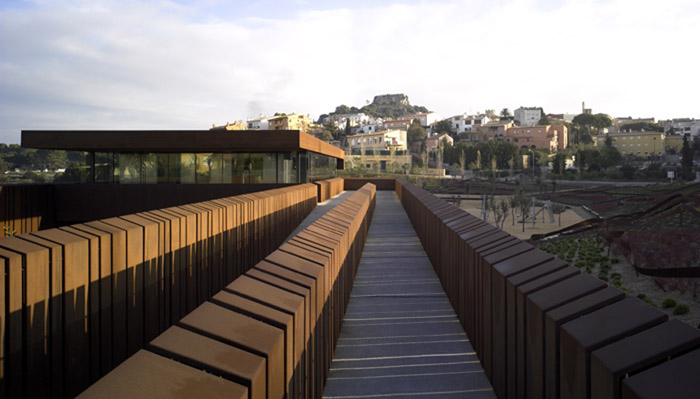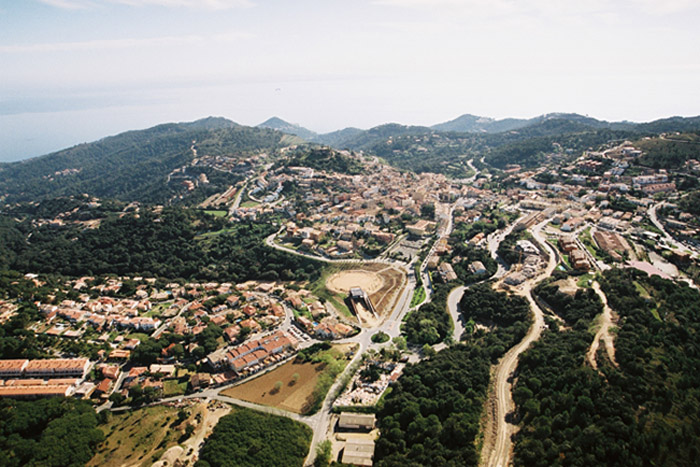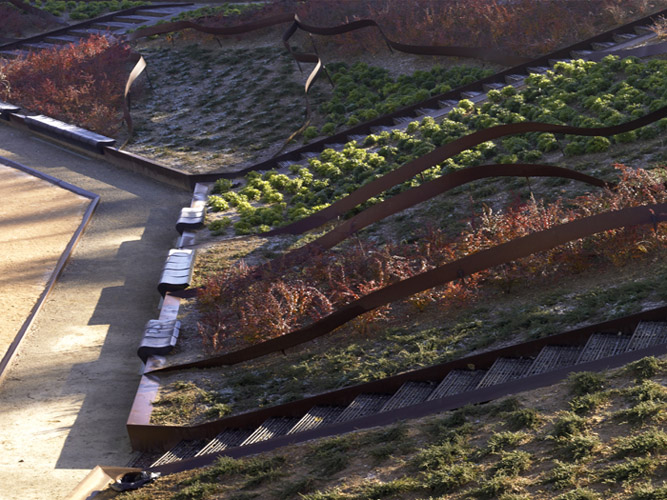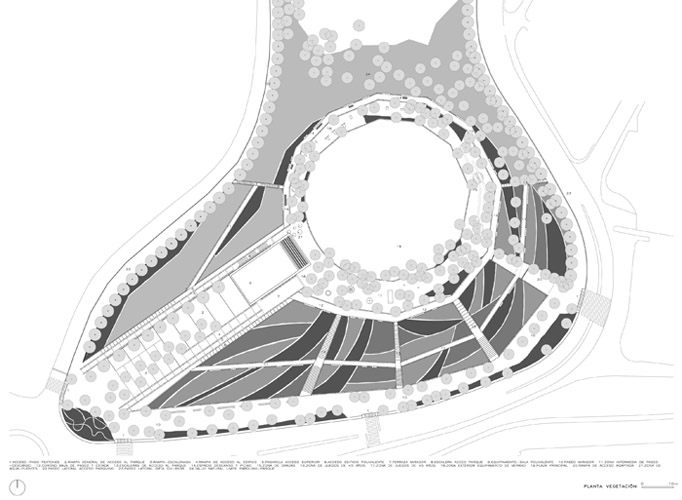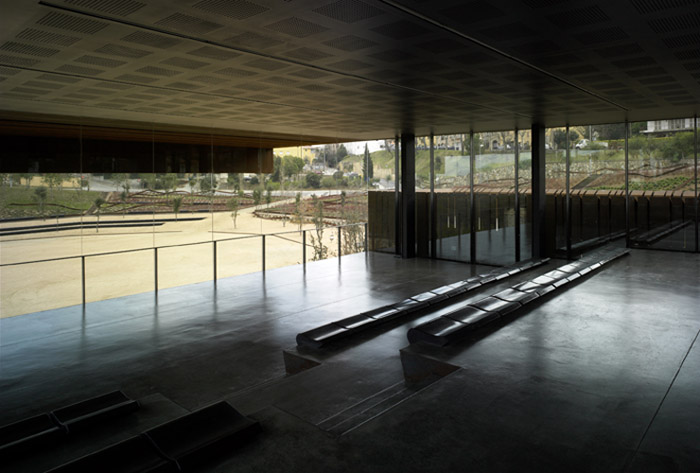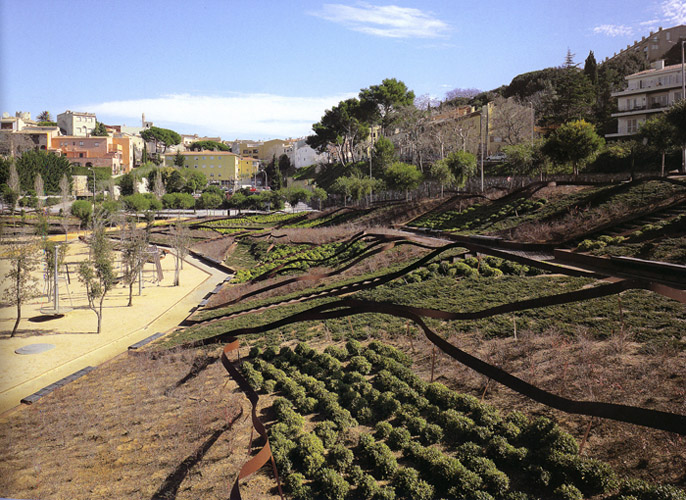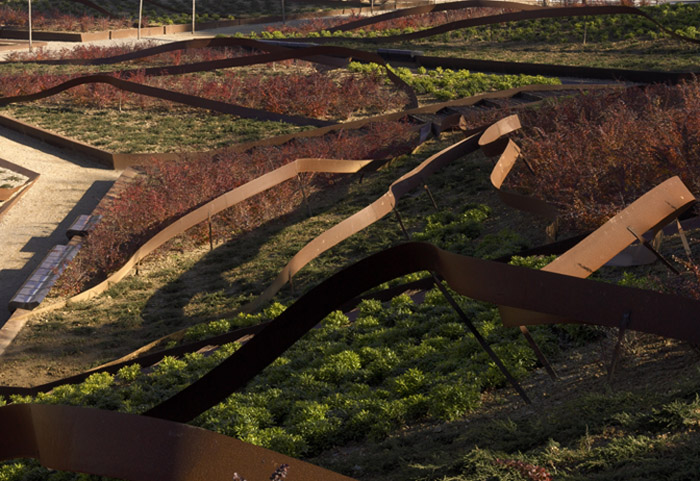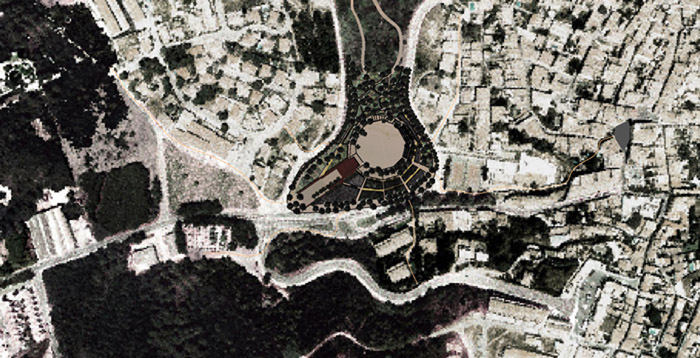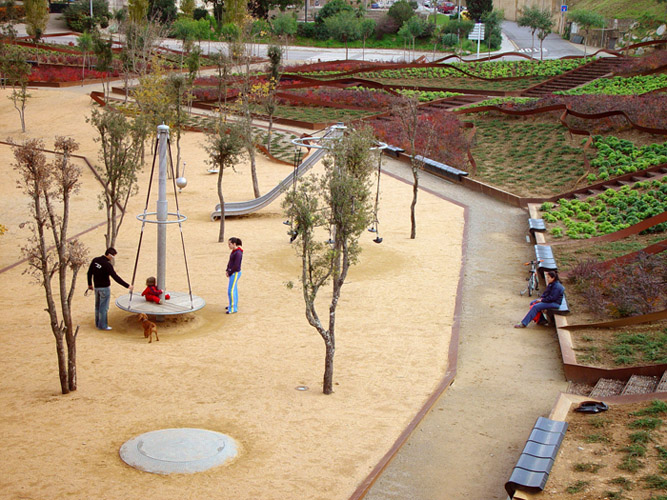Previous state
Prudently set back from the shoreline which, in bygone times brought the danger of pirates and corsairs, the old centre of Begur huddles, dense and compact, on the southern slope of a hill crowned with a castle. Today, with the explosive pressure of tourism, its normal figure of four thousand inhabitants increases tenfold in the summer season. In these circumstances, the cautious containment of other times has given way to dispersion in urban planning that is undaunted even by the rugged topography of the surrounding hills.The road from Pals enters the town from the lowest point of its old centre, where it meets these hills and the new urban extensions. Besides offering a good view of the hill with the castle, this is quite a special place because it brings together a number of qualities that make it both central and peripheral. It both articulates the meeting of the new areas of settlement with the old, occupying a central position within the perimeter of the town today and, in being the main access point to the town, it is well-connected with out-of-town zones and even with nature. In fact, a now-dry riverbed runs from here forming a valley populated with pine groves and continuing through to the woods on the north-western plain. The trees thus trace a green corridor that seems to trying to drive a wedge between the contained Begur and the disperse one.
Aim of the intervention
In 1998 the town council decided to consolidate the entry point of the green corridor at this strategic location. The conversion of the head of the valley into the Parc de l’Arbreda (Woodland Park) aimed, in particular, to fix and give substance to the point of transition between the built-up area and the natural corridor. However, the park was also to make the best use of the new centrality of its location and to become a well-equipped civic space and meeting place of the new Begur.Description
Perhaps in response to its role as a central, articulating place of connection, the Parc de l’Arbreda has a radial structure organised around a central arena. Much of this circle is of sand that has been completely freed of obstacles, although around its perimeter are grouped trees, fountains, picnic zones and children’s playing areas. A metal bench with modular seats runs around the edge of the sand and is backed by the thrust of the surrounding banks. Tracing a shape not unlike a spider’s web, the banks are furrowed by concentric horizontal paths and steps that converge on the sandy arena in a radial sense. In the interstitial spaces of this network of paths there are parterres planted with different herbaceous and shrub species. The plants in these garden plots are grouped by type forming segments of different colours that are separated by metal strips. Like rippling ribbons, these strips curl back upon themselves and rise up from the ground creating sinuous combinations that are the leitmotif of the project.The main access to the park is by way of a construction that is very eye-catching in the general setting. It has an extended floor plan that goes from the south-western edge of the grounds through to the circular arena, along the line of a radius that runs towards the castle of Begur. It has a series of parallel, smooth or stepped ramps leading into the sandy area, the banks or the building. The latter, hanging over the ramps to form a porch giving access to the sand, contains a multipurpose space with tiered seating that looks out over the sand with the castle-topped hill in the background.
Assessment
The off-centre position of the building displaces the centre of mass of the park towards its more urban side. Its being set back in this fashion has freed the northern edge of its grounds to give way to the line of the valley and the natural woodlands corridor. In the same way as one moves back in order to see something better, this shift creates a lively tension in the visual relationship between the park, the lowest point of the old town centre and the castle at the top. In effect, the multifunctional building seems to be proudly pointing out the beautiful view of the castle-topped hill to everyone who comes to the town. In contrast with the dense settlement of the town’s historic centre, the Parc de l’Arbreda offers its citizens a spacious, open meeting place from whence they can enjoy this iconic image in which they can recognise themselves.David Bravo Bordas, architect
[Last update: 02/05/2018]


